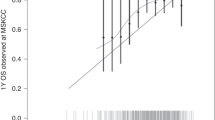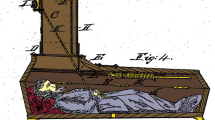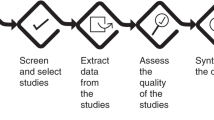Series Editors' Note
Large randomized clinical trials testing the impact of subject-, disease- and transplant-related co-variates on outcomes amongst recipients of haematopoietic cell transplants are uncommon. For example, who is the best donor, which is the best pretransplant conditioning regimen or the best regimen to prevent or treat acute and/or chronic graft-versus-host disease. To answer these questions we often rely on analyses of data from large observational datasets such as those of the Center for International Blood and Marrow Transplant Research (CIBMTR) and the European Society for Blood and Marrow Transplantation (EBMT). Such analyses have proved extremely important in advancing the field. However, in contrast to randomized trials, we cannot be certain potentially important prognostic or predictive co-variates are balanced between cohorts selected for comparison from an observational dataset, a limitation which can lead to incorrect conclusions. In the typescript which follows the authours describe a method to adjust for known imbalances in co-variates and get a closer approximation of the truth. They give two examples, the impact of a new pretransplant conditioning regimen on disease-free survival (DFS) in subjects with Ewing sarcoma and the impact of donor-type on treatment-related mortality (TRM) and leukaemia relapse in subjects with acute leukaemia. Direct adjusted survival and cumulative incidence function (CIF) analyses are an important step forward. These analyses can be done using available statistical packages and we encourage readers to use them rather than reporting unadjusted analyses. Finally, we must emphasize direct adjustment can only be done for know prognostic or predictive co-variates, not unknown co-variates. Unknown co-variates will be balanced in randomized trials which is why we do them. So direct adjustment is an important step forward but not a perfect substitute for randomized trials. But any step forward is important. To quote Laozi: 千里之行始於足下 (A journey of a thousand miles begins with a single step).
This is a preview of subscription content, access via your institution
Access options
Subscribe to this journal
Receive 12 print issues and online access
$259.00 per year
only $21.58 per issue
Buy this article
- Purchase on Springer Link
- Instant access to full article PDF
Prices may be subject to local taxes which are calculated during checkout



Similar content being viewed by others

References
Kaplan EL, Meier P. Nonparametric estimation from incomplete observations. J Am Stat Assoc. 1958;53:457–81.
Kalbfleisch JD, Prentice RL. The statistical analysis of failure time data. Can J Stat. 1982;10:64–6.
Cox DR. Regression models and life-tables. J R Stat Soc Ser B Stat Method. 1972;34:187–220.
Scheike TH, Zhang MJ. Flexible competing risks regression modeling and goodness-of-fit. Lifetime Data Anal. 2008;14:464–83.
Makuch RW. Adjusted survival curve estimation using covariates. J Chronic Dis. 1982;35:437–43.
Chang IM, Gelman R, Pagano M. Corrected group prognostic curves and summary statistics. J Chronic Dis. 1982;35:669–74.
Zhang X, Loberiza FR, Klein JP, Zhang MJ. A SAS macro for estimation of direct adjusted survival curves based on a stratified Cox regression model. Comput Methods Prog Biomed. 2007;88:95–101.
Zhang X, Zhang MJ. SAS macros for estimation of direct adjusted cumulative incidence curves under proportional subdistribution hazards models. Comput Methods Prog Biomed. 2011;101:87–93.
Chen P, Tsiatis AA. Causal inference on the difference of the restricted mean life between two groups. Biometrics. 2001;57:1030–8.
Zheng, C, Dai, R, Gale, RP, Zhang, M-J. Causal inference in randomized clinical trials. Bone Marrow Transplant. 2019. https://doi.org/10.1038/s41409-018-0424-x.
Andersen PK, Borgan O, Gill R, Keiding N. Linear nonparametric tests for comparison of counting processes, with applications to censored survival data, correspondent paper. Int Stat Rev. 1982;50:219–44.
Gray RJ. A class of K-sample tests for comparing the cumulative incidence of a competing risk. Ann Stat. 1988;16:1141–54.
Fine JP, Gray RJ. A proportional hazards model for the subdistribution of a competing risk. J Am Stat Assoc. 1999;94:496–509.
Elwood, JM, Causal relationships in medicine: a practical system for critical appraisal. Oxford Medical Publications. 1988, Oxford; New York: Oxford University Press. xi, 332 p.
Brereton HD, Simon R, Pomeroy TC. Pretreatment serum lactate dehydrogenase predicting metastatic spread in Ewing’s sarcoma. Ann Intern Med. 1975;83:352–4.
Szydlo R, Goldman JM, Klein JP, Gale RP, Ash RC, Bach FH, et al. Results of allogeneic bone marrow transplants for leukemia using donors other than HLA-identical siblings. J Clin Oncol. 1997;15:1767–77.
Breslow N. Contribution to the discussion of paper by D.R. Cox. J R Stat Soc Ser B Stat Method. 1972;34:216–7.
Nieto FJ, Coresh J. Adjusting survival curves for confounders: a review and a new method. Am J Epidemiol. 1996;143:1059–68.
Gail MH, Byar DP. Variance calculations for direct adjusted survival curves, with applications to testing for no treatment effect. Biom J. 1986;28:587–99.
Zhang MJ, Klein JP. Confidence bands for the difference of two survival curves under proportional hazards model. Lifetime Data Anal. 2001;7:243–54.
Wang H, Zhang X. Confidence band for the differences between two direct adjusted survival curves. J Stat Softw. 2016;70(Code Snippet 2):17.
Author information
Authors and Affiliations
Corresponding author
Ethics declarations
Conflict of interest
RPG is a part-time employee of Celgene Corporation. The remaining authors declare that they have no conflict of interest.
Additional information
Publisher’s note: Springer Nature remains neutral with regard to jurisdictional claims in published maps and institutional affiliations.
Rights and permissions
About this article
Cite this article
Hu, ZH., Peter Gale, R. & Zhang, MJ. Direct adjusted survival and cumulative incidence curves for observational studies. Bone Marrow Transplant 55, 538–543 (2020). https://doi.org/10.1038/s41409-019-0552-y
Received:
Accepted:
Published:
Issue Date:
DOI: https://doi.org/10.1038/s41409-019-0552-y
This article is cited by
-
Independent and joint associations between the triglyceride-glucose index and NT-proBNP with the risk of adverse cardiovascular events in patients with diabetes and acute coronary syndrome: a prospective cohort study
Cardiovascular Diabetology (2023)
-
Clash of the titans: axi-cel versus tisa-cel for advanced-stage DLBCL
Nature Reviews Clinical Oncology (2023)
-
The association between body fatness and mortality among breast cancer survivors: results from a prospective cohort study
European Journal of Epidemiology (2023)
-
Association of Mediterranean diet with survival after breast cancer diagnosis in women from nine European countries: results from the EPIC cohort study
BMC Medicine (2023)
-
Dietary patterns related to biological mechanisms and survival after breast cancer diagnosis: results from a cohort study
British Journal of Cancer (2023)


